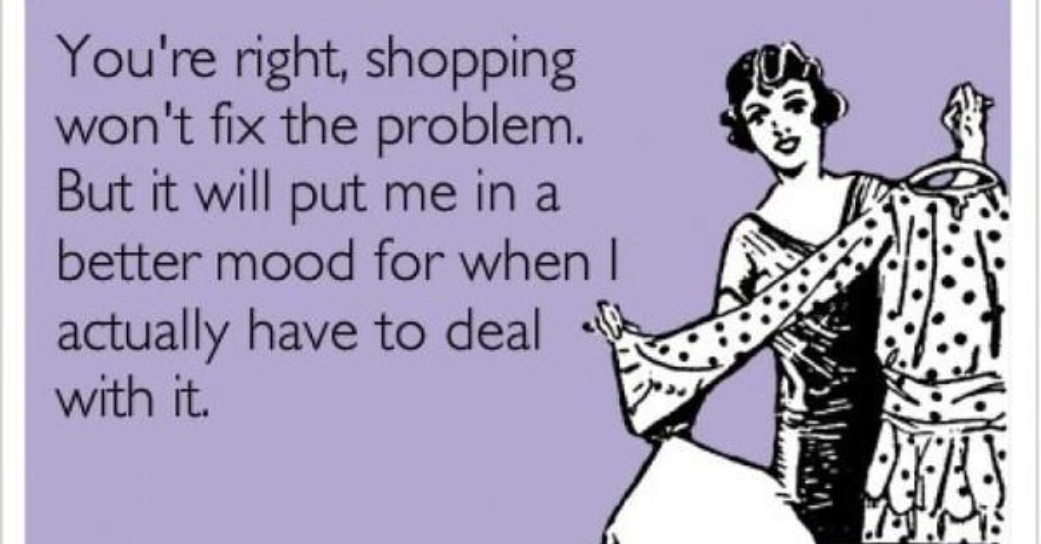Let's be honest: a journalist’s inbox is like a digital junkyard. It’s crammed with press releases, each one fighting for just a bit of attention. It’s where the dream of media coverage begins—and often ends, buried in the noise.
If you’ve ever sent a press release and heard nothing but silence, you know how it feels. Like shouting into the void, your message gets lost in the endless flood of information. So, how do you stand out and make a real impact?
The truth is, journalists aren’t sitting around waiting for your pitch. They’re busy, overwhelmed, and constantly bombarded with information. If your press release looks like the same old generic template, it’s headed straight for the trash.
At Don’t Be A Little Pitch, we don’t believe in blending in or playing it safe. We’re the risk-takers who’ve built brands from the ground up by mastering the art of getting media attention. We thrive on creating content that cuts through the clutter and stands out. And now, we’re ready to share our proven strategies for crafting PR narratives that don't just get noticed, they leave an unforgettable impression.
The Hook: Reel Them In
You wouldn’t walk into a party and introduce yourself in a boring way, right? You’d say something interesting, something that grabs attention and makes them want to know more. The same goes for your press release. That first sentence is your chance to hook the journalist and pull them into your story.
Forget the tired, boring openers like "Local Nonprofit Hosts Annual Fundraising Gala." Sure, it’s informative, but it’s about as exciting as watching paint dry. Your hook needs to be sharp, witty, and impossible to ignore—something that makes the journalist lean in, eager to keep reading.
Here are a few tips for crafting a hook that will grab attention:
- Keep it short, impactful, and powerful. Capture the heart of your story in a few words and leave the reader wanting more.
- Don’t be afraid to challenge expectations or throw in a little twist. A bit of the unexpected can go a long way.
- If your story ties into something trending or a hot topic, make sure your hook reflects that. Journalists are drawn to timely, relevant stories.
- Paint a picture that creates excitement, urgency, or intrigue. Make the reader feel like they’re about to dive into something exciting.
- A smart, relevant question can pique curiosity and make the reader eager for the answer.
Instead of this:
"Local Nonprofit Hosts Annual Fundraising Gala"
Try this:
"Can one night save a life? [Nonprofit Name] is betting on it with their annual gala, aiming to raise [amount] for [cause]."
Why it works?
- Emotional: Emotional: It pulls at the heart, connecting the event to a deeper, meaningful cause.
- Urgent: Emotional: It pulls at the heart, connecting the event to a deeper, meaningful cause.
- Informative: It clearly communicates the nonprofit's mission and the gala's purpose.
Remember, your hook is your first and maybe only chance to make a good impression. So don’t waste it on something forgettable. Craft a hook that’s as exciting as your story, and you’ll see your press release rise above the noise, grabbing the attention it deserves.
The Narrative Arc: Tell a Story, Not Just Facts
Humans are natural storytellers. We’re drawn to narratives that take us on a journey, with relatable characters, challenges, and moments of victory. Think about your favorite books, movies, or even those campfire stories that kept you hooked as a kid. They all have one thing in common: a strong narrative arc that keeps you engaged from start to finish.
Your press release should work the same way. It’s not just a collection of facts—it’s an opportunity to tell a story that connects with journalists and their readers. Think of it as a short, impactful tale that shows the heart and mission of your brand.
So, how do you turn a press release into an engaging story? That’s where the narrative arc comes in. It’s the framework that takes your readers on a journey.
Instead of this:
"[Company Name] releases a new line of organic skincare products."
Try this:
- The Beginning: Start by painting a picture of the current skincare landscape – perhaps consumers are overwhelmed by confusing ingredients and misleading claims. Then, introduce [Company Name] as a brand dedicated to simplicity and transparency.
- The Middle: Describe the journey of developing this new line. Did they face challenges sourcing high-quality organic ingredients? Did they spend years perfecting their formulas? Share the passion and dedication behind the products.
- The Climax: Announce the arrival of the new organic skincare line. Highlight what makes it unique – is it incredibly gentle? Does it feature a revolutionary new ingredient? Focus on the solution it provides for consumers.
- The End: Conclude with a concise summary of the product line's key features and benefits. Reinforce the brand's commitment to organic ingredients and customer satisfaction. Include a call to action, inviting readers to explore the new line.
Why it works?
By presenting your press release as a narrative, you offer readers more than just information. You take them behind the scenes, revealing the dedication and effort that went into creating this new line. This approach transforms a simple announcement into a captivating story that resonates with journalists and their audience.
A press release isn’t just about sharing information. It’s about telling a story that resonates. By shaping it into a compelling narrative, you’ll turn your press release into something journalists want to share.
The Data Angle: Back It Up
Anyone can make a claim, but in PR, where trust and credibility are crucial, it’s essential to support your assertions with solid facts. Data forms the backbone of a strong narrative, transforming your statements into undeniable truths. It shows you’ve done your research and that you’re not just making empty promises.
Journalists receive countless pitches daily, each claiming something extraordinary. It’s your job to cut through the noise and provide concrete evidence that your story deserves their attention.
Instead of this:
"Our new productivity app helps people get more done."
Try this:
- Start with a problem: Present data on the average person's daily distractions and lost productivity. For example, "The average office worker spends 2 hours a day on non-work related tasks." (Source: [Credible Research Study])
- Introduce your solution: Present data on how your app addresses this problem. For example, "In a study of 100 users, our app helped individuals increase their focused work time by 40%."
- Highlight the impact: Use data to showcase the positive outcomes. For example, "Users reported a 20% reduction in stress levels and a 15% increase in task completion."
Why it works?
By grounding your claims in data, you provide concrete evidence that your app delivers real results. This approach builds credibility and makes your story more persuasive to journalists.
Here are some more tips for effectively using data in your PR narratives:
- Choose relevant and impactful data: Don't just throw in random statistics for the sake of it. Select data that directly supports your key messages and resonates with your target audience.
- Keep it simple and digestible: Avoid overwhelming journalists with complex charts and graphs. Present your data in a clear, concise, and easy-to-understand format.
- Source your data carefully: Ensure your data comes from reputable sources with sound methodology. Citing credible sources adds weight to your claims and enhances your credibility.
- Tell a story with your data: Numbers can be dry and lifeless on their own. Use them to illustrate a trend, highlight a problem, or showcase the impact of your product or service.
Data is not just about proving your point; it's about telling a story that resonates with your audience. By incorporating relevant and impactful data into your PR narratives, you'll create a powerful and persuasive message that journalists can't ignore.
The Human Element: Make It Personal
When it comes to PR, it’s the human element that truly differentiates your story. It’s what transforms your press release from a dry corporate announcement into a relatable and memorable narrative. By incorporating personal stories, anecdotes, and quotes into your press release, you tap into our innate desire for connection, making your message resonate on a deeper level.
Keep in mind that journalists are people too. They’re not just searching for facts and figures; they want stories that move and inspire them. By giving your brand a human face, you create an emotional connection that goes beyond mere data and leaves a lasting impression.
Instead of this:
"[Company Name] launches a new initiative to support local communities."
Try this:
- Share a personal story: "When [Company Name] founder, [Name], witnessed the struggles of families in their local community, they knew they had to act. Inspired by [personal anecdote or experience], [Name] launched [initiative name] to provide [specific support]."
- Include a powerful quote: "'Seeing the smiles on the faces of the children we've helped makes all the difference,' says [Name], [Title] at [Company Name]. 'This initiative is not just about giving back; it's about empowering our community to thrive.'"
- Show the impact: "For single mother, [Name], the [initiative name] has been a lifeline. '[Quote about how the initiative helped them],' she shares. '[Company Name]'s commitment has made a tangible difference in the lives of [number] families and counting."
Why it works?
By putting a human face on the initiative and sharing real-life stories of impact, you create a press release that is both informative and emotionally engaging. This approach resonates with journalists and readers alike, making your message more memorable and impactful.
Remember, your press release is more than just a way to promote your brand; it’s an opportunity to connect with your audience on a human level. By incorporating personal stories, anecdotes, and quotes, you’ll create a narrative that resonates with journalists and their readers, making a lasting impact that transcends the facts and figures.
The Call to Action: Guide Them Gently
You’ve created an engaging hook, developed a compelling narrative arc, and enriched your story with data and human connection. However, before you hit that send button, there's one essential element you mustn’t overlook: the call to action.
Consider your call to action as a gentle nudge, guiding journalists toward the outcome you desire. It serves as the link between your engaging story and the specific action you want them to take. Whether it’s scheduling an interview, visiting your website, or sharing your story on social media, your call to action needs to be clear, concise, and compelling.
Here are some tips to help you craft an effective call to action:
- Be specific: Instead of a generic "learn more," specify what they’ll discover and where to find it.
- Create a sense of urgency: Use phrases like "limited time offer" or "act now" to prompt immediate action.
- Make it easy: Provide clear instructions and contact details so journalists can act with minimal effort.
- Offer an incentive: Consider providing exclusive interview opportunities, free trials, or access to additional resources to make it more enticing.
- Personalize it: Tailor your call to action to the specific journalist or publication you’re targeting.
Your call to action is the finishing touch that completes your PR masterpiece. It connects your captivating story to the real-world impact you aim to achieve. So, don’t leave it to chance. Craft a call to action that’s just as compelling as the story itself, and watch as your press release inspires action and drives results.
Ready to Captivate the Media?
At Don't Be A Little Pitch, we are more than just a PR company. We are a team of passionate storytellers, strategists, and connectors who believe in the power of collaboration. We'll work closely with you to understand your brand's essence and craft PR narratives that leave a lasting impression.
From crafting captivating pitches to securing media coverage that sets you apart, we'll handle every interaction with the media, ensuring your brand gets the attention it deserves. We have the connections, the know-how, and the audacity to make your PR dreams a reality.
Contact us today and discover how we can help you craft PR narratives that mesmerize the media and elevate your brand to new heights.
60-Day Guarantee
PR only works if it builds fast. If we don’t land you 2 major features and line up 3 more within 60 days, you’ll get a full refund - no questions asked.
Free Authority Score Checker
Check your online reputation and authority score for free and see how you stack up and get custom tips to improve instantly.




.png)




